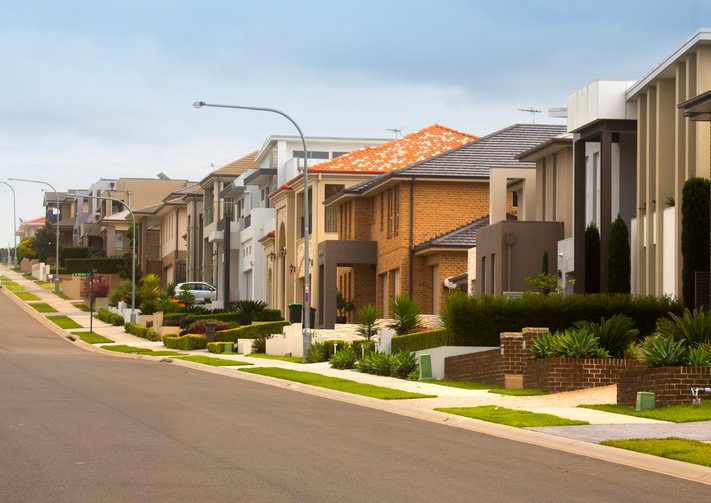This article is from the Australian Property Journal archive
WESTPAC is expecting house prices to surge by 15% in 2021 as part of a “fully fledged, broad-based broom” across Australian capital cities, before growth slows to 5% in 2022.
The deteriorating affordability that is starting to weigh on owner occupier demand and is likely to open the door to further investor activity. The Westpac Melbourne Institute “time to buy a dwelling” index dropped 14.2% over the three months to May. The index reading of 103.5 is now 21.6% below its recent peak in Nov and a substantial 15.7 points below its long run average.
All jurisdictions have seen substantial declines since November.
“Affordability is once again becoming the ‘elephant in the room’ for housing. Many markets encountered severe affordability problems in 2017, 2010 and in 2005-07. Several will be heading into similar territory in 2022,” wrote Westpac senior economist Matthew Hassan.
Affordability is historically stretched in Melbourne due to the strong run-up over the 2010s and a milder price correction than Sydney in 2018 and 2019. Queensland and Western Australia are much more affordable than during the mining peak, where 25% to 30% of average income was required to purchase at the market median compared to 19% to 20% currently.
“One point of interest with ‘regional’ areas is the potential affordability drawcard for city-dwellers, particularly those that may be able to use new working from home arrangements introduced during COVID to relocate regionally while largely retaining their ‘city incomes’.” Hassan said.
“Not surprisingly, the potential here is greatest in NSW and Vic, where the affordability improvement of relocating regionally can be worth up to 10 percentage points of income. For other states, the potential pick-up is more in the 5-7 percentage point range.”
Westpac Melbourne Institute consumer house price expectations index surged a further 5.8% to 163.8 between February and May to be nearly 40 points above its long run average of 124.8.
The increase in sentiment arrived with the unemployment expectations Index at a 10-year low. The sharp 17.6% drop recorded over the three months to May to a reading of 110.2 showed more respondents expect unemployment to decline.
Despite that, the risk aversion index remains elevated, rising from 40 in December to 43.6 in Mar despite the dramatic improvement in wider sentiment.
Auction markets remain strong, with average clearance rates holding at just over 80% in Sydney and 76% in Melbourne. Even with Melbourne back in lockdown over the weekend, clearance rates over the month came in at almost 75%.
Listings across the wider market are starting to catch up with sales, although that progress has been slow with a 15% to 20% gap still apparent nationally, and stock on market still just 2.8 months of sales, below the long run average of 3.8.
“All aspects of the market are now showing outright strength,” Hassan said.
Turnover nationally is nearly 30% above its pre-COVID peak and prices are 8.5% above their pre-COVID highs, pushing new record levels in most markets.
“Aside from the strength of price gains in recent months, the most striking aspect has been the breadth of the upturn – most of the 90-odd detailed sub-markets we track recording gains running at a double-digit annualised growth pace and none recording declines,” Hassan said.
“This is very rare in the history of Australian property cycles which more usually see a few markets ‘sit it out’ when prices are on the move.”
“Everyone is out there looking for any hint of a moderation to this boom. So far there is nothing really that convincing – auction clearance rates have come off slightly, but we are only talking about 2% or 3% and still running around 80%. There is nothing but a slight cooling off from ‘red-hot’ to ‘hot’ at best, and it is not really a sign things are about to turn cold.”
Dwelling approvals are booming, led by a massive surge in detached house construction, particularly in smaller capital cities and regional areas. While some of that is a policy-related pull-forward, owing to the federal government’s HomeBuilder grant, the near-term outlook for activity is very strong.
Westpac said Australia’s housing markets have had an “extraordinary first half of 2021, the strong post-COVID rebound we saw in the second half of 2020 accelerating quickly to what is now a fully–fledged, broad-based boom”.
Released at the beginning of Melbourne’s fourth lockdown, Westpac warned that for Australia’s economy and housing sectors, the “worst of the virus threat has passed although there remain significant questions around the reopening of external borders”.
The national economic growth outlook remains strong, with the economy forecast to expand 4.5% in 2021. Unemployment also lower, forecast to end 2021 at 5%, versus an outlook of 6% back in February and 7.0% in its Westpac’s November report.




